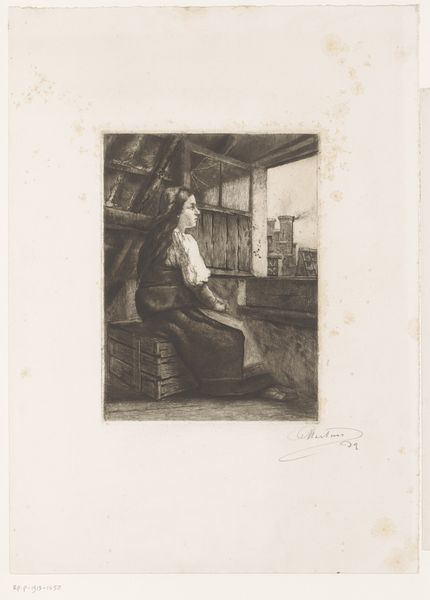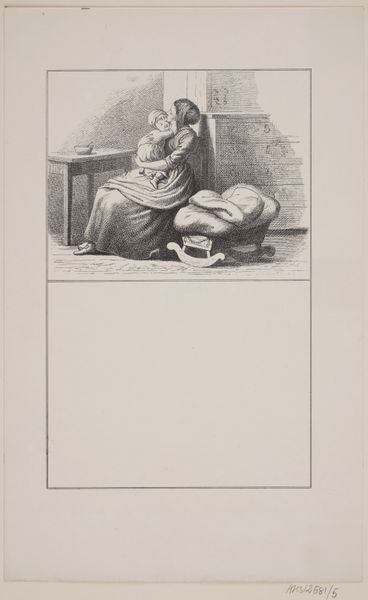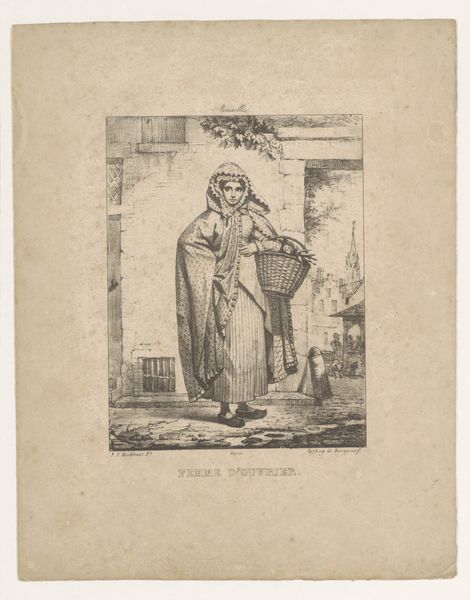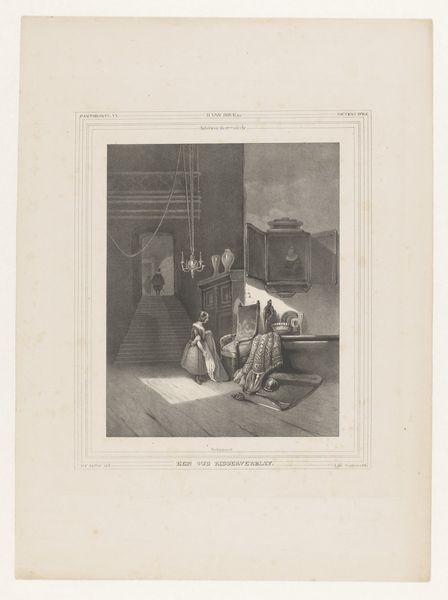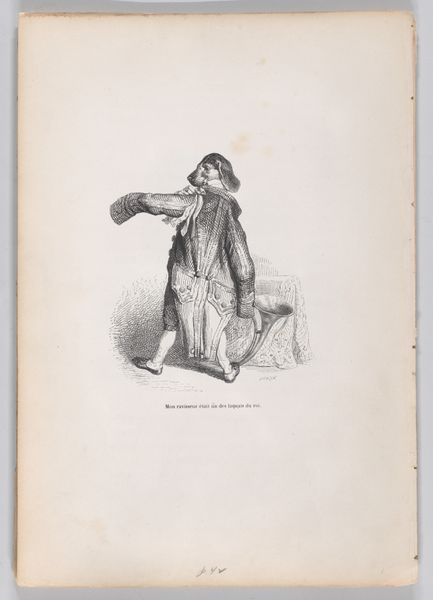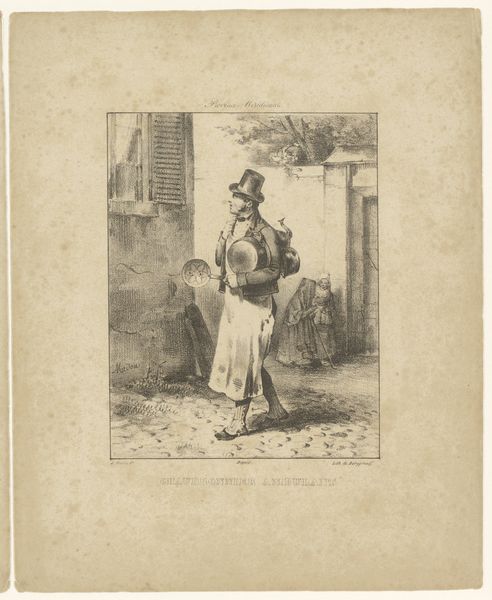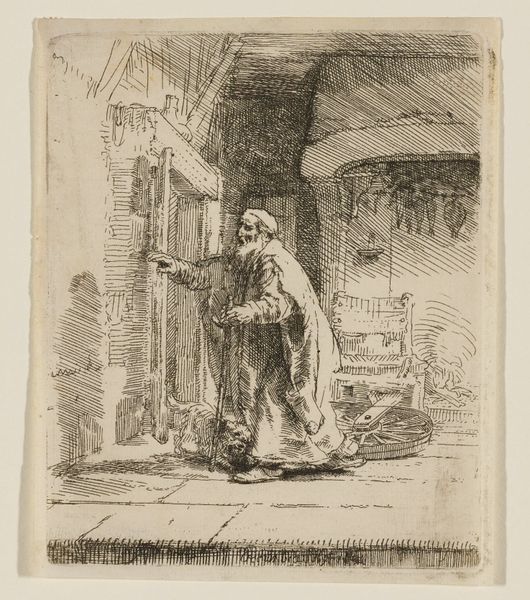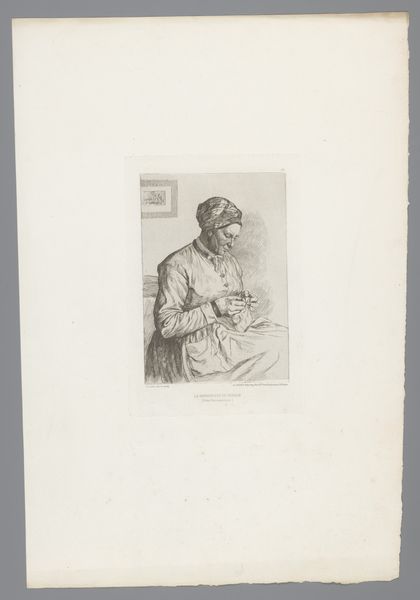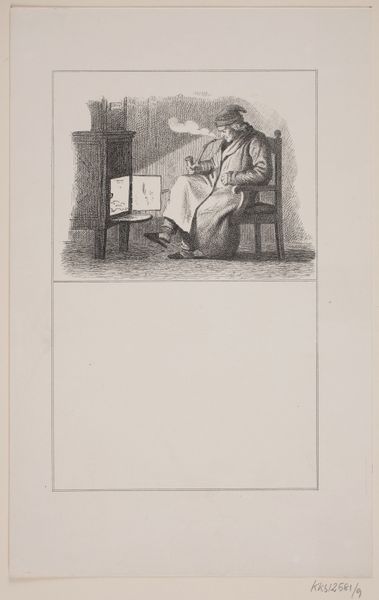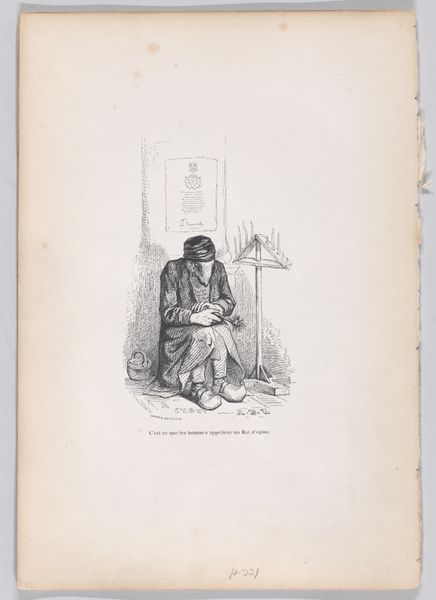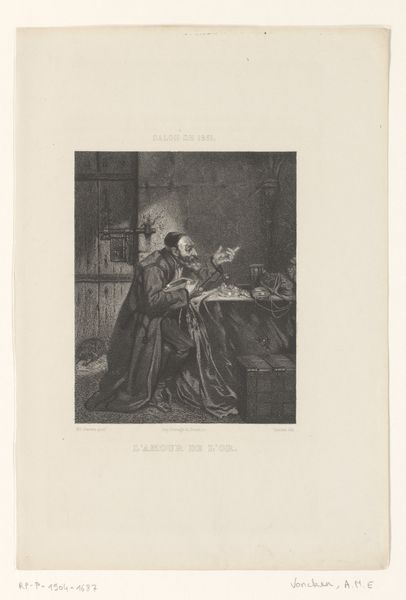
drawing, lithograph, print, paper
#
portrait
#
drawing
#
lithograph
# print
#
figuration
#
paper
#
romanticism
#
history-painting
Dimensions: 245 × 175 mm (image); 385 × 315 mm (sheet)
Copyright: Public Domain
Curator: Before us is "Faust in His Study", a lithograph print by Eugène Delacroix, created in 1828. Editor: The atmosphere is so heavy. Look at that concentrated darkness achieved through what must be intensive layering of the lithographic crayon. Curator: Delacroix uses the lithographic medium masterfully here, drawing with an almost painterly quality on the stone. Notice the strategic deployment of light and shadow—the chiaroscuro that sculpts Faust’s form and imbues him with a sense of weighty introspection. It reinforces the Romantic era focus on emotion. Editor: And think about the actual labor involved in creating this image. The painstaking application of the crayon to the lithographic stone, the precise chemical processes to fix the image. The material act is one of layering and refinement of tonal qualities using a somewhat primitive methodology. How many impressions could one artisan have pulled of a scene like this? And consider that paper, too—where it came from and the methods used in manufacturing and printing. Curator: Absolutely, the materiality informs its aesthetic effect. I'd say it gives tangible form to Faust’s inner turmoil and perhaps serves as a mirror reflection to the struggles facing artists and other intelligentsia during the dawn of industrial printmaking and associated challenges to originality, labor, and artisanal value. Observe his posture, bowed and contemplative, which speaks volumes of the human condition and searching the boundaries of reason and spirit in this artwork. Editor: And he’s positioned centrally. I mean, it literally casts light on the Romantic, individualist subject—which gives way to larger socio-political considerations of how society defines intellect or artistry. Thinkers in dark rooms! Then there is this object of the skull and the tomes beside him, symbols, if you will, of knowledge production, as if Faust is producing wisdom under industrial capitalism's very influence. Curator: It’s an illustration of a larger concept and of a moment of history too. So precise in the balance of formal components: vertical and horizontal. So artful in its exploration of this precise balance. It leaves an impression on one in its pure elegance and construction. Editor: A confluence of the materials and methods in social space and philosophical dialogue that speak across two centuries. A wonderful study in tone and context to close our tour today.
Comments
No comments
Be the first to comment and join the conversation on the ultimate creative platform.
